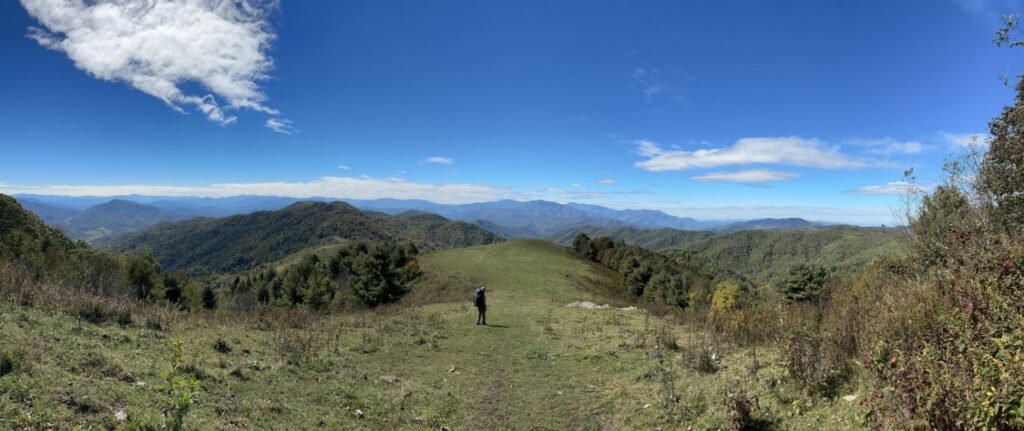Perseverance in the Parks: How One Scientist Continues Vital Research Despite Challenges
As I gaze over the rolling mist-covered peaks of the Great Smoky Mountains, I’m reminded of why these national treasures need our protection and understanding now more than ever. Having written about the Smokies for years, I’ve developed a deep appreciation for the delicate ecosystems that exist within our national parks. Today, I want to share a story that resonates with the spirit of perseverance that’s as enduring as these ancient mountains themselves.
The Challenging Landscape of National Park Research
National parks are facing unprecedented challenges. Climate change, increased visitation, funding cuts, and political pressures have created a perfect storm for researchers trying to understand and preserve these ecological wonders. Yet, in the midst of these difficulties, dedicated scientists continue their vital work.
I’ve hiked countless trails in the Smokies, from Clingmans Dome to Alum Cave, and witnessed firsthand how the environment is changing. The very air we breathe tells a story, which is why atmospheric research in these protected areas is so crucial.
Meet the Scientist Braving the Headwinds
Amidst budget constraints and diminishing institutional support, one atmospheric scientist stands out for their unwavering dedication. This researcher (whose work reminds me of the persistence of the rhododendrons that cling to the rocky outcrops in the Smokies) continues collecting vital data that helps us understand how air quality impacts everything from forest health to visitor experience.
“The data doesn’t collect itself,” they might say with a wry smile while setting up monitoring equipment in the pre-dawn chill, reminiscent of those early morning hikes to Charlies Bunion when the mountains are still wrapped in their signature smoky haze.
Why This Research Matters
The atmospheric research being conducted helps us understand:
- How air pollution affects plant and animal species unique to national parks
- Changes in precipitation patterns that impact water resources
- Long-term climate trends that will shape conservation strategies
- The effectiveness of environmental regulations and policies
I’m reminded of watching the synchronous fireflies in Elkmont – a natural phenomenon that depends on precise environmental conditions to continue. Without understanding the atmospheric changes occurring, we risk losing such magical experiences.
Facing the Funding Freeze
Research in national parks has always required determination, but current conditions have made it exceptionally difficult. Federal budget fluctuations, shifting priorities, and the increasingly politicized nature of environmental science have created a challenging landscape for dedicated researchers.
| Research Challenge | Impact | Adaptation Strategy |
|---|---|---|
| Budget cuts | Reduced monitoring capability | Citizen science partnerships |
| Political pressure | Shifting research priorities | Focus on multi-benefit projects |
| Staffing shortages | Data collection gaps | Technology automation |
| Climate extremes | Equipment damage | Resilient design implementation |
Despite these obstacles, our featured scientist continues their work, much like the persistent waters of Abrams Falls carving through the stone – slowly but surely making progress.
Innovation Born from Necessity
What’s remarkable about research in challenging times is how innovation flourishes. Our scientist has developed creative approaches to maintain data integrity with fewer resources. This reminds me of the ingenious ways the early settlers in the Smokies adapted to mountain life, making use of every resource available.
From deploying low-cost sensors to training volunteer networks, these adaptive approaches ensure that critical atmospheric monitoring continues even when institutional support wavers.
Community Science to the Rescue
One bright spot in this story is the growing role of community science. Park visitors and local residents are increasingly participating in data collection efforts. This collaborative approach not only supplements professional research but also builds public understanding and support for science.
I’ve seen similar community engagement in the Smokies, where local knowledge about weather patterns, wildlife movements, and forest changes often proves invaluable to researchers. There’s something powerful about combining scientific expertise with generations of observational wisdom.
The Future of Park Research
While the current landscape for national park research is challenging, the dedication of scientists like our atmospheric researcher gives me hope. Their persistence reminds me of the resilience I’ve observed in the Smokies after forest fires – where new growth eventually emerges from the charred earth.
The data being collected today will inform conservation decisions for decades to come. It will help park managers prepare for changing conditions and develop strategies to protect these natural treasures for future generations.
How You Can Support Science in Our Parks
If you’re inspired by the dedication of these researchers, consider how you might contribute:
- Participate in citizen science projects when visiting national parks
- Support organizations that fund research in protected areas
- Advocate for science-based policy and adequate research funding
- Practice Leave No Trace principles to help preserve research areas
Every time I visit the Smokies, I’m reminded that these places belong to all of us. Their preservation and understanding requires collective effort, especially in challenging times.
Conclusion: The Value of Persistence
The story of this atmospheric scientist reminds us that important work often continues quietly, behind the scenes, even when conditions are less than ideal. Much like the Smoky Mountains themselves – standing strong through centuries of change – dedicated researchers continue their vital work despite the obstacles.
Next time you stand on an overlook in the Smokies, watching the famous blue haze drift across the mountains, remember that there are scientists working to understand every aspect of that view – from the chemistry of the air to the health of the forests below. Their persistence ensures that we’ll continue to understand and protect these treasured landscapes for generations to come.
Have you participated in citizen science in national parks? I’d love to hear about your experiences in the comments below!

